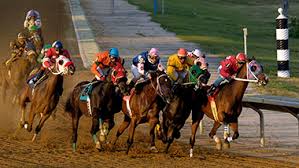Looking back to the men who rode
 I’m a life-long Lutheran and have attended the same church since I was born. As a matter of fact, my great-grandfather, where the roots for our funeral home business come from as he started out as a cabinet maker who then built coffins to order – is one of six men listed on the charter documents of that Lutheran church at its inception in 1877.
I’m a life-long Lutheran and have attended the same church since I was born. As a matter of fact, my great-grandfather, where the roots for our funeral home business come from as he started out as a cabinet maker who then built coffins to order – is one of six men listed on the charter documents of that Lutheran church at its inception in 1877.
I’m also a fairly conservative person who, over time got used to spending Sunday morning in church. So, about 15 years ago when our church announced it was starting Saturday night services I laughed and thought, “Who will ever go to that?” Well, I must humbly say I am now a big fan of Saturday night services and am writing this article on Sunday morning when I normally would have been in church as I now attend Saturdays about 80% of the time. Funny, how habits can change.
I preface my article with those paragraphs as I lead into the crux of the article. Church starts at 6 pm on Saturdays and I have always been a fan of the Kentucky Derby which had a post-time of 5:50 pm on Saturday. Luckily, I live only about 3 minutes from my church and stayed back to watch the Derby, which was over in less than three minutes, and then I jumped in my car and walked into the church service during the opening hymn. Right in the middle of the sermon my phone vibrated in my pocket and — even though I usually ignore the temptation to look during church — I did so on Saturday — maybe the sermon was a little dull allowing me to do so! What I saw was a notice that the apparent winner of the Kentucky Derby had been disqualified and a new winner had emerged. Wow!!
So that brings me to this feature article that appeared in the Los Angeles Times last week about a cemetery in Lexington, Kentucky, that bears the history of the Kentucky Derby with its dead. You see, many of Kentucky’s first – but least remembered – jockeys are buried there in what is known as African Cemetery Number 2. The story of these black jockeys and others who are buried in this cemetery tells of a time in America, in the late 1800’s, where African American men, women, and children were reaching for opportunities that their new found freedom provided. The article states, “The roots of Kentucky’s success in the horse industry are literally buried in African Cemetery No. 2.. . . These men helped shape the sport.”
According to the article you can find the grave of jockey Oliver Lewis in this cemetery. It goes on to say that he was born into slavery in 1856, but in 1875, as a free man, rode Aristides across the finish line to win the inaugural Kentucky Derby.
There is also a red and black furlong marker in the cemetery that marks the location where black jockey Isaac Burns Murphy was once buried. Murphy rode the winning mounts in the Derby in 1884, 1890, and 1891. The furlong marker stands tall there because, according to the article, Murphy was re-interred at the famed Kentucky Horse Park where he is the only human interred among many famous horses, including the famed horses, Man o’War, and his offspring, War Admiral – the 1937 Kentucky Derby Winner and winner of Horse Racing’s Triple Crown that same year. The article points out that, “the grounds at the horse park are impeccably maintained. But there is no such honor, or beauty, at African Cemetery No. 2.”
While black jockeys such as Lewis and Murphy helped pioneer the Kentucky Derby, the article points out that beginning in 1922 no black jockeys would appear in the Kentucky Derby again until Marlon St. Julien rode in 2000.
The article continues to say that Lexington’s African Cemetery Number 2 first opened in 1869 as a cemetery for the Colored Peoples Union Benevolent Society No. 2. The gates always remain open to the public and while a majority of those buried there have ties to the horse racing industry, other African Americans from journalism and religion are also buried there, as are soldiers from the U.S. Army’s 9th and 10th Cavalry regiments, the all-black units known as the “Buffalo Soldiers”. The cemetery’s last burial was in 1974 and it was placed on the national Register of historic Places in 2004.
[wpforms id=”436″ title=”true” description=”true”]




















